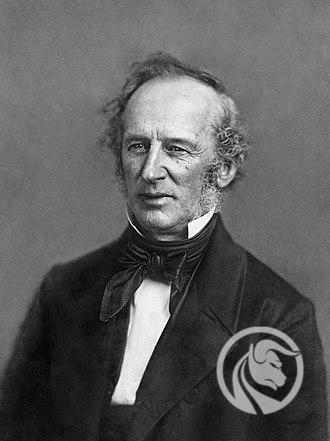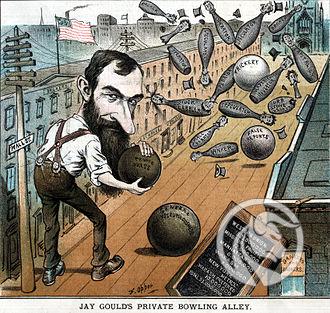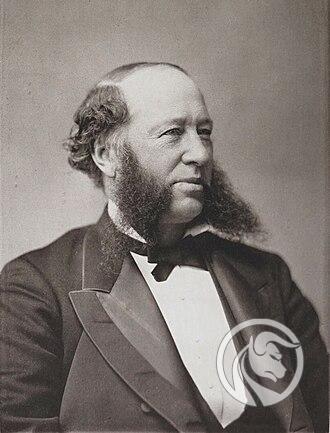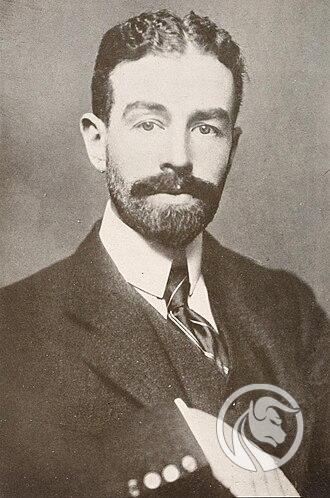The Vanderbilt family - the story of the fall and the shadow of the former empire
The story of the Vanderbilt family is a great example that nothing is given once and for all. Even staggering wealth does not protect against financial irresponsibility. In Forex Club, we have repeatedly described the stories of great traders, their speculative successes, the origins of financial crashes and crises, as well as the profiles of people responsible for major investment scandals. This time we decided to describe a story that teaches us that there are no fortunes that cannot be lost.
The Vanderbilts were one of the wealthiest and most respected families in the XNUMXth century United States. The creator of the power was Cornelius and his son William. They built a huge fortune, mainly in... transport industry, first river, and then move on to railway investments. Vanderbilt was a man of his times, the so-called Gilded Age (Gilded Age). This was the time between the end of the Civil War and the 1898 war with Spain. It was then that huge fortunes emerged and grew in the shadow of financial and corruption scandals. At the time of Cornelius' death, his estate was greater than the amount accumulated in the United States treasury. His son doubled his fortune in less than a decade. However, subsequent generations no longer had any business acumen. Ultimately, after many generations, there is no point in looking for the Vanderbilts on the list of the richest or most influential families. Currently, Cornelius's descendants are just a shadow of the former millionaire's former power and wealth. How did this happen?
The beginnings of the Vanderbilts' glory
The family was started by Jan Aerston, who was a farmer living in the Dutch village of De Bilt. He emigrated to North America under an agreement signed with the West India Company. Why did the Dutch company send Dutch people to the East Coast of North America? It is worth remembering that in the 1664th century, the area around today's Manhattan was colonized by the Dutch. It was only in 9 that New Amsterdam (the former name of New York) passed into the hands of the English. Despite the enormous prospects offered by the New World, subsequent generations were unable to take advantage of the opportunity. As a result, Cornelius Vanderbilt was born into a poor family as one of 11 children. Due to the fact that the family could not provide him with sufficient funds for education, young Cornelius finished his education at the age of XNUMX. As he later said:
"If I went to school, I wouldn't have time to learn anything else."
According to one story about the beginnings of Cornelius's business (and there were many versions), young Vanderbilt borrowed $100 from his mother (about $1900 in today's prices) and started a business transporting people between islands near New York. He focused on transporting people between Staten Island and Manhattan. After some time, he purchased the yacht Charlotte, which he used to transport food and other goods. This helped expand the business and increase recognition in its industry. The War of 1812 between Great Britain and the United States also helped. During it, Vanderbilt used his yacht, which allowed him to become significantly richer.
The path to business independence

Cornelius Vanderbilt. Source: wikipedia.org
In November 1817, he was asked by an entrepreneur named Thomas Gibbson to manage a steamboat that plied between New Jersey and New York. Steamships were an invention that revolutionized maritime transport. Thanks to them, goods could arrive faster and cheaper than before. However, the problem was the emerging monopolies that hindered competition by using a political umbrella. T. Gibbson was sued by Robert Livingston and Robert Fulton for breaking the monopoly on transport between individual towns (including New Jersey and New York). Ultimately, Gibbson and Vanderbilt prevailed in the legal battle. This paved the way for the development of passenger transport. The increase in revenues and profits meant that both partners earned very well. Thanks to working for Gibbson, the still young Cornelius was able to learn how to manage a really large operation. He could use what he learned in his own business. In 1826 his friend and partner died. Three years after his death, he decided that he had gained enough experience to concentrate only on his business.
The accident that changed Cornelius
Cornelius' story could have ended much earlier. In November 1833 he was involved in the Hingtstow accident. As a result of the train crash, he suffered broken ribs and a punctured lung. The recovery took over a month. Former president John Quincy Adams was also on the train, but he was not seriously injured in the accident. This incident had an impact on Vanderbilt because it made him realize the fragility of life. From then on, Cornelius paid attention to his safety, but at the same time began to develop his business more boldly. He could also be cynical about it. The situation in 1834 was a great example. His dispute with the Hudson River Steamboat Association (HRSA) concerned the monopoly of steam locomotive service between New York and Albany. Cornelius decided to use the press, where he used liberal slogans referring to the thoughts of the US president, who was then Andrew Jackson. The media campaign resulted in HRSA having to answer uncomfortable questions. As a result, the monopolists decided to pay Vanderbilt a large sum to end the campaign. With the money, Cornelius decided to move his business to Long Island. When the fever broke out gold in California, Vaderbilt decided to expand its operations to include ocean routes. He was a supporter of a canal through Nicaragua that would shorten the journey of ocean-going ships. Unfortunately, he himself did not have enough money to build the canal. In turn, investors were not interested due to high costs, poor construction conditions and uncertain profits.
Cornelius invests in railways
In the following years, Vanderbilt expanded its activities in river and ocean shipping. However, another invention appeared that could threaten his business. It was the railway lines. Our hero decided to enter this business. He noted that railways could be a great way to transport goods within the continent, that is, where the river network did not allow for transport by steamships. What's more, building a railway was cheaper than a canal, which meant that in the future this means of transport would outperform steamships. In addition, the construction of the railway line initially provided a monopoly on transport. It was these features that made railroads great business in the XNUMXth century. The disadvantage of this venture was the initial high investment costs. On the other hand, it increased barriers to market entry. Thanks to this, companies that were already on the market generated cash flow, which they could reinvest in building further connections or taking over smaller entities. In addition to investing in transportation, Vanderbilt purchased numerous properties in Manhattan and Staten Island.
Times of speculation and thoughts about succession
It is worth mentioning that Vanderbilt was not only a great entrepreneur, but also a speculator. He managed to take over shares in Harlem, which he did with the so-called “cornered”. Thanks to the takeover of the company, he became its president. He took over the company just to prove that he could turn an insignificant company into a profitable business. Cornelius was already thinking about the future. He had the greatest hopes for William, who was appointed manager responsible for operational management. This allowed the son to gain experience, which facilitated the subsequent succession. In the following years, the Vanderbilts took over other rivals. In 1864 they purchased the Hudson River Railroad. Three years later, the New York Central Railroad was in the purse. Instead, in 1869 they took over the Lake Shore and Michigan Southern Railway. The acquisition did not concern only the USA, as Cornelius also acquired Canadian railways.

A satire depicting the conflict between Cornelius and J. Fisk. Source: wikipedia.org
Not everything was going Cornelius's way. A great example was the War of Eire, where Jay Gould, James Fisk Jr. and former cattle driver Daniel Drew, fought for this railroad. Vanderbilt won initially, but was secretly diluted by a new stock issue by the Fisk-Gould-Drew trio. As a result, Vanderbilt lost control over the company and, as a result, lost $7 million (an astronomical amount). The whole story is good material for a thriller film. Cornelius spent a small fortune "lobbying" politicians to intervene and overturn the resolution.

A satire depicting Jay Gould "quarterbacking" Wall Street.
There was a famous case of a senator who took money from both Vanderbilt and Gould and voted for the latter. Ultimately, the war ended with the defeat of our hero. The only success was the recovery of $7 million thanks to the agreement with Gould. However, Fisk and Drew did much worse on this deal. James Fisk Jr. he was murdered a few years after Cornelius lost control of Eire. Drew, on the other hand, lost his fortune during the crash of 1873 and was left to his son for the rest of his life. Ultimately, it was Jay Gould who won the battle for the Eire Railway because he became its president. Gould's story itself is great material for a thriller movie, because his actions almost led to war between Canada and the US, but that's a topic for another story.
William takes over
Vanderbilt, despite the failure, continued to increase his fortune. At the time of his death, his assets were valued at approximately $100 million, making him one of the richest people in the world. Legend has it that Cornelius, near death, said to his chief heir William:
“Any fool can make a fortune, but it takes a wise man to keep it.”

William Vanderbilt, the main heir to the fortune. Source: wikipedia.org
Cornelius' son, William Henry, inherited most of the estate his father left behind. A quarrel broke out in the family. One of the sisters felt cheated (she received about $0,5 million). However, she was unable to convince the court to change the will. William began to multiply his fortune and it must be admitted that he did well. He doubled his fortune in a few years. It was 'Billy' who built the first stately residence at 640 Fifth Avenue.
The creator of the fortune, Cornelius, insisted that most of the family fortune should always fall to one heir - this was to prevent it from being fragmented. The ethicality of this is questionable, but it certainly has a mathematical basis. The more children, the faster the property is divided. At the same time, the more heirs, the greater the chance that it will fall into the hands of a financially irresponsible person. Ultimately, when William Henry died in 1885, he left the family interest in the company to his sons, Cornelius Vanderbilt II and William Kissam Vanderbilt. This was a violation of the rule of the creator of the family's power, which then influenced the further fate of the family.
The passing of the Vanderbilt fortune
Subsequent business generations did not have such a knack for business. It is true that they were able to open new businesses and achieve success, but they lacked the momentum that Cornelius or William had. Already in 1903, WK Vanderbilt handed over the management of the railway to hired managers. Thanks to this, he was able to focus on philanthropic activities and building his position among other large families. As he himself noted:
“Inherited wealth is the real obstacle to happiness… It left me with nothing to hope for, nothing tangible to seek or strive for.”
At the beginning of the XNUMXth century, another descendant, George, was also not interested in running the company. He built the Biltmore estate near Asheville, North Carolina, where he experimented in scientific agriculture, cattle breeding, as well as forestry, which consumed his part of the family fortune. He also made large donations to public institutions. Due to his lack of interest in business development and broad philanthropy after his death, William Kissam's estate was worth as much as he inherited after his father's death.

Cornelius III "Neily" Vanderbilt. Source: wikipedia.org
Cornelius "Neily" Vanderbilt III was also an interesting figure, who spent huge sums of money to maintain a high standard of living. He himself recalled in Fortune's Children: "Every Vanderbilt son... except me, increased his fortune." However, in fact, few Vanderbilts were able to increase their wealth. The problem was that assets were divided from generation to generation, and no one followed in the footsteps of Cornelius or William to devote their lives to creating wealth. If there was a lack of money, properties, shares or valuable items were sold. All this to keep your spending level unchanged.
Cornelius's descendants consumed more and more and were less concerned with accumulating money. The Vanderbilts purchased real estate, expensive furniture and works of art such as paintings and sculptures. In addition, they increasingly organized large balls, which were intended to lead to the acceptance of the family by the cream of New York society.
Gloria Vanderbilt as one of the exceptions
Subsequent generations also showed no talent for increasing the family fortune. The most famous fourth-generation Vanderbilt was Reginald "Reggie" Claypool Vanderbilt, an avid gambler and playboy. As you can easily guess, he was not very good at generating money. He was the father of fashion designer Gloria Vanderbilt and the grandfather of CNN anchor Anderson Cooper. The story of Gloria, who was called "Gloria" by American tabloids in the 30s, is interesting "poor rich girl". This was because her mother had been deprived of her right to receive funds from the trust fund and had her parental rights terminated. The reason was the bad influence she had on her daughter and her extravagant lifestyle.

Gloria Vanderbilt in 1959. Source: wikipedia.org
Gloria went to her aunt, where she lived in prosperity, but felt unloved. In adult life “poor rich girl” she had three husbands and lived on the property left by her ancestors. She tried her hand at business and after the initial sales success of women's jeans (she created jeans with a different cut), Gloria earned $3 million from her clothing company in a few years. However, eventually business started to go worse because there were no ideas for developing the brand. As a result, bShe was forced to sell her house in Southampton and moved in with her son Anderson. There, tragedy befell her as Carter's son committed suicide in front of her by jumping from the 14th floor of an apartment building. In the following years, Gloria made a living by writing books about her life (including romance novels with celebrities). This activity brought her a very large income. She left behind an estate valued at approximately $200 million. Interestingly, Anderson inherited most of the fortune, so it was a will “Cornelius style”.
The transport revolution did not help
The revolution in transport was also a problem, as air and car traffic began to develop. As a result, both inland waterway and rail transport declined. A particularly big problem was the railway lines, which were treated by their owners as cash cows. Companies paid dividends and financed investments with loans. Over time, falling transportation rates brought many railroads to the brink of bankruptcy. This is the chuckle of history because Cornelius was able to diagnose the threat from new means of communication and invested in them at the beginning of their development. This was the case with steamboats and later with railways. However, subsequent generations did not take advantage of technological revolutions. They had enough wealth to create truly great shipping companies, but why bother with that when you could just build another mansion and enjoy life?
They failed in business, but they made history
Even though Cornelius' descendants are not on the Forbes richest list, their legacy lives on. As an example can be given Vanderbilt University in Nashville, Tennessee and Vanderbilt Avenue in Manhattan, New York. Many members of the Vanderbilt family achieved success outside of business. Just mention people like John O. Hammond, who was a music producer and talent scout. He was hailed as one of the most important people in the music industry in the 3th century. It is also worth mentioning the journalist Anderson Cooper and the art historian John Wilmerding. In turn, Harold Stirling won the America's Cup in yacht regattas three times. William Kissam "Willie K" Vanderbilt II, created the Vanderbilt Cup in auto racing. Gloria Vanderbilt was a renowned artist, designer, actress, author and businesswoman. Gertrude Vanderbilt Whitney was a sculptor, art patron and collector, and founder of the Whitney Museum of American Art.
Remember - there is no fortune that cannot be wasted!
The success of the Vanderbilts was launched by Cornelius' shipping and railway empire. As time passed, the family spent more than they earned. The reason was the desire to keep up with the standard of living compared to other famous New York houses. However, you are not able to build wealth in the long term if your expenses exceed your income. A fortune accumulated in the early XNUMXth century, thrown into S&P 500 index it would allow you to increase your wealth many times over, but it would require sacrifices. The first two generations would know how to use this capital, but subsequent descendants fell in love with luxury. They didn't remember poverty like Cornelius did. As a result, they were unable to make sacrifices and did not want to focus on business. Instead, they chose philanthropy and a prosperous life.
Ultimately, life is not just about making money, but about enjoying life. The story of the Vanderbilt family has two morals:
Any fortune can be wasted when you live for show.
Don't waste your life building a great fortune at any cost, because future generations will not respect your efforts.






















![Forex Club – Tax 9 – Settle tax on a foreign broker [Download the Application] Forex Club - Tax 9](https://forexclub.pl/wp-content/uploads/2024/02/Forex-Club-Podatek-9-184x120.jpg?v=1709046278)
![Trading View platform – solutions tailored to the needs of traders [Review] trading view review](https://forexclub.pl/wp-content/uploads/2024/03/trading-view-recenzja-184x120.jpg?v=1709558918)
![How to connect your FP Markets account to the Trading View platform [Guide] fp markets trading view](https://forexclub.pl/wp-content/uploads/2024/02/fp-markets-trading-view-184x120.jpg?v=1708677291)
![CRB index – one of the popular commodity market benchmarks [Guide] crb index](https://forexclub.pl/wp-content/uploads/2024/05/indeks-crb-184x120.jpg?v=1715055656)
![How to invest in ChatGPT and AI? Stocks and ETFs [Guide] how to invest in chatgpt and artificial intelligence](https://forexclub.pl/wp-content/uploads/2023/02/jak-inwestowac-w-chatgpt-i-sztuczna-inteligencje-184x120.jpg?v=1676364263)







![Izabela Górecka – “Success on the market depends not only on knowledge, but also on emotional stability” [Interview] Izabela Górecka - interview](https://forexclub.pl/wp-content/uploads/2024/04/Izabela-Gorecka-wywiad-184x120.jpg?v=1713870578)
![WeWork – the anatomy of the collapse of a company valued at $47 billion [WeWork, part II] wework bankruptcy story](https://forexclub.pl/wp-content/uploads/2024/04/wework-bankructwo-historia-184x120.jpg?v=1711729561)
![Adam Neumann – the man who screwed up Softbank [WeWork, part AND] adam neumann wework](https://forexclub.pl/wp-content/uploads/2024/04/adam-neumann-wework-184x120.jpg?v=1711728724)
![The most common mistakes of a beginner trader - Mr Yogi [VIDEO] Scalping - The most common mistakes of a beginner trader - VIDEO](https://forexclub.pl/wp-content/uploads/2024/03/Scalping-Najczestsze-bledy-poczatkujacego-tradera-VIDEO-184x120.jpg?v=1711601376)
![Learning patience: No position is also a position - Mr Yogi [VIDEO] Scalping - Learning patience - No position is also a position - VIDEO](https://forexclub.pl/wp-content/uploads/2024/03/Scalping-Nauka-cierpliwosci-Brak-pozycji-to-tez-pozycja-VIDEO-184x120.jpg?v=1710999249)
![When to exit a position and how to minimize losses - Mr Yogi [VIDEO] Scalping - When to exit a position and how to minimize losses - VIDEO](https://forexclub.pl/wp-content/uploads/2024/03/Scalping-Kiedy-wyjsc-z-pozycji-i-jak-minimalizowac-straty-VIDEO-184x120.jpg?v=1710336731)
















Leave a Response